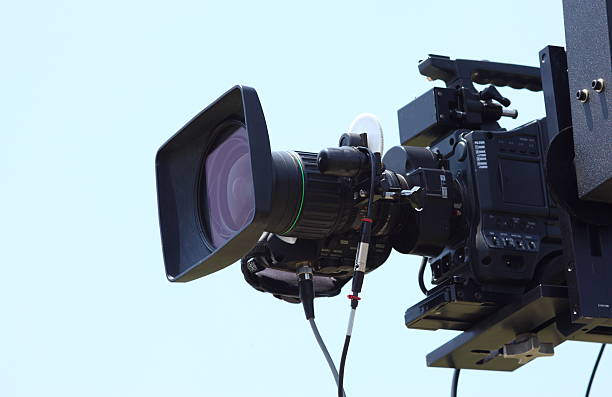Understanding the Bridge Cameras in 2023
Bridge Cameras
In the immense domain of computerized photography, lovers, and experts look for a camera that consistently overcomes any barrier between minimized point-and-shoots and high-level DSLRs. This journey prompted the improvement of Bridge Cameras, a flexible and robust class that joins the comfort of conservative cameras with the usefulness of more significant, complicated frameworks.

Grasping Bridge Cameras
An extension camera, frequently referred to as a superzoom or ultrazoom camera is a crossbreed between a simple-to-use and a computerized single-focal point reflex (DSLR) camera. These cameras commonly include a decent focal point with a broad zoom range, disposing of the requirement for compatible focal points.
Advancement of Bridge Cameras
The idea of Bridge Cameras has developed throughout the long term, adjusting to headways in innovation and changing buyer needs. Early Bridge Cameras were known for their great zoom capacities, while current cycles incorporate state-of-the-art highlights like high-level self-adjust frameworks, high-goal sensors, and improved video recording abilities.
Vital Elements of Bridge Cameras
Zoom Reach
One of the main traits of Bridge Cameras is their striking zoom range. These cameras frequently boast optical zooms surpassing most DSLR focal points, making them ideal for catching far-off subjects, natural life, or many-sided subtleties in a scene.
Picture Sensors
Span cameras are furnished with different picture sensor sizes, going from more modest sensors ordinarily tracked down in conservative cameras to bigger sensors equivalent to those in some DSLRs. The decision of sensor size influences picture quality, low-light execution, and profundity of the field.
Self-adjust Frameworks
Current Bridge Cameras come outfitted with cutting-edge self-adjust frameworks, including a large number of center places and canny following capacities. This permits photographic artists to catch quick subjects with accuracy, making span cameras appropriate for sports and untamed life photography.
Manual Controls
While span cameras are intended for convenience, many models incorporate manual controls that empower photographic artists to calibrate settings like opening, shade speed, and ISO. This adaptability requires the two amateurs hoping to learn and experienced photographic artists looking for imaginative control.
Electronic Viewfinders and LCD Screens
Span cameras frequently consolidate electronic viewfinders. (EVFs) notwithstanding LCD screens. EVFs give a more customary shooting experience, permitting clients to create shots while precisely reviewing settings and openness.

Benefits of Bridge Cameras
Across the board, Accommodation
The essential benefit of Bridge Cameras lies in their cross-the-board comfort. With a proper focal point covering an expansive zoom range, clients can consistently progress from wide-point shots to outrageous fax organizations without the problem of conveying and changing different focal points.
Conservative and Convenient
In contrast to massive DSLR arrangements, span cameras are smaller and more compact. This makes them ideal for movement photography, where the comfort of a lightweight camera with broad zoom capacities is significant.
Practical
Span cameras offer a practical option in contrast to DSLRs, particularly for lovers who need progressed highlights without the monetary responsibility of buying various focal points. The forthright expense of a scaffold camera is much of the time lower, giving an appealing section highlighting great photography.
Easy-to-use plan
In light of ease of use, span cameras take special care of an expansive crowd, including novices and those changing from simple to use cameras. The automatic controls and programmed shooting modes permit clients to catch great pictures without a lofty expectation to learn and adapt.
Restrictions of Bridge Cameras
Restricted Focal point Adaptability
Even with their noteworthy zoom capacities, span cameras still need to improve the adaptability of exchangeable focal points. This restriction can disadvantage photographic artists who hunger for the flexibility of involving different central lengths for other circumstances.
More modest Sensors and Picture Quality
While some Bridge Cameras include bigger sensors, many depend on more modest sensors than DSLRs. This can bring about constraints, especially in low-light circumstances, where bigger sensors mostly perform better.
Size and Weight Contemplations
Even though span cameras are smaller than DSLRs can, in any case, be bulkier than some top-of-the-line minimized cameras. The expanded size and weight might be a component for photographic artists looking for the highest level of versatility.
High-level Elements Hole
While span cameras offer plenty of elements, they might fall behind top-of-the-line DSLRs regarding specific high-level functionalities. Proficient picture takers might end up missing highlights like vigorous weather conditions fixing, double card openings, and broad customization choices.

Picking the Right Scaffold Camera
Exploration and Correlation
Choosing the right extension camera includes careful examination and correlation. Consider factors, for example, zoom range, sensor size, self-adjust capacities, and ergonomics. Understanding audits and client encounters can give meaningful experiences in actual execution.
Financial plan Contemplations
Span cameras arrive in a scope of sticker costs, and adjusting your financial plan to your expectations is fundamental. Decide your needs, whether a broad zoom range, high-level elements, or predominant picture quality, and track down a model that finds some harmony.
Future-Sealing
As innovation advances, it’s wise to consider the future-sealing of your venture. Search for models that integrate the most recent innovations, guaranteeing that your extension camera stays significant and fit as new highlights and enhancements arise.
Ways to amplify Extension Camera Execution
Dominating Manual Controls
While span cameras offer programmed modes, opening their maximum capacity requires dominating manual controls. Understanding ideas like opening, shade speed, and ISO enables photographic artists to assume innovative command of their pictures.
Utilizing Zoom Imaginatively
The broad zoom scope of Bridge Cameras opens up astonishing imaginative conceivable outcomes. Explore different avenues regarding fax creations for natural life photography, catch complex subtleties in engineering, and utilize wide-point viewpoints for vivid scenes.
Post-Handling Procedures
Span cameras catch pictures in JPEG and frequently offer Crude capacities. Investigating post-handling procedures permits photographic artists to improve and adjust their photos, making up for limits in the camera’s handling abilities.
Conclusions
Span cameras consume a unique space in the realm of computerized photography, offering a convincing blend of flexibility, comfort, and reasonableness. While they may not supplant the specific capacities of very good quality DSLRs span cameras keep on developing, integrating progressed highlights and innovations that enticement for an expansive range of picture takers. Whether you’re a fledgling searching for a section point into serious photography or a fan looking for a movement accommodating across-the-board arrangement, the universe of Bridge Cameras anticipates and is prepared to overcome any issues among effortlessness and refinement.
| Aspect | Description |
| What is a Bridge Camera | A hybrid between point-and-shoot and DSLR cameras, known as superzoom or ultrazoom. Features a fixed lens with a broad zoom range, eliminating the need for interchangeable lenses. |
| Evolution of Bridge Cameras | Evolved over time with technological advancements, early models known for impressive zoom capabilities. Modern versions include features like advanced autofocus, high-resolution sensors, and improved video recording capabilities. |
| Vital Elements of Bridge Cameras | – Zoom Reach: Impressive optical zoom capabilities. – Image Sensors: Various sensor sizes affecting image quality and low-light performance. – Autofocus Systems: Advanced systems with numerous focus points. – Manual Controls: Designed for ease of use but includes manual controls for settings adjustment. – Viewfinders and LCD Screens: Often equipped with electronic viewfinders (EVFs) and LCD screens. |
| Benefits of Bridge Cameras | – All-in-One Convenience: Single lens covering a wide zoom range. – Compact and Portable: Lightweight and ideal for travel photography. – Affordable: Cost-effective alternative to DSLRs, especially for enthusiasts. – User-Friendly Design: Suited for beginners with automatic controls and shooting modes. |
| Limitations of Bridge Cameras | – Limited Lens Flexibility: Fixed lens restricts versatility. – Smaller Sensors: Some models may have smaller sensors, impacting low-light performance. – Size and Weight Considerations: Can be bulkier than high-end compact cameras. – Advanced Features Gap: May lack certain advanced features found in top-tier DSLRs. |
| Choosing the Right Bridge Camera | – Research and Comparison: Consider factors such as zoom range, sensor size, autofocus capabilities, and ergonomics. – Budget Considerations: Balance your budget with desired features. – Future-Sealing: Look for models with the latest technologies for long-term relevance. |
| Ways to Maximize Bridge Camera Performance | – Mastering Manual Controls: Unlock full potential understanding manual settings. – Creative Use of Zoom: Explore creative possibilities with the wide zoom range. – Post-Processing Techniques: Enhance and adjust images using post-processing, leveraging RAW capabilities. |
| Conclusion | Bridge cameras occupy a unique space, offering a blend of versatility, convenience, and affordability. While they may not replace high-end DSLRs, they continue to evolve with advanced features, appealing to a broad range of photographers. Whether a beginner or enthusiast, the world of Bridge Cameras awaits, bridging the gap between simplicity and sophistication. |

